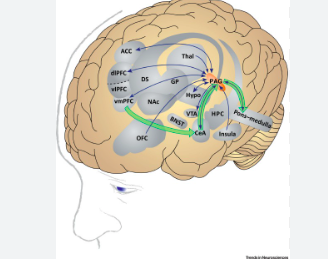The Play Brain - rats, and maybe humans, are wired for play
Science News reports in “Brains may have a playfulness switch” that scientists at the Humbolt University of Berlin have fun with their little lab rats. They are delighted to let us know that the periaqueductal gray (PAG) neurons in the brain light up when lab rats giggle when tickled and play a version of keep away.
The periqueductal gray area of the brain is associated with vocalization and some automatic responses. Image source: Trends in Neurosciences
The PAG is known to be involved in instinctual responses and automatic activities such as breathing and reacting to pain. The new research adds laughing and giggling to its functions, leading neuroscientist Michael Brecht to conclude that the stack of neurons is also wired for play.
This adds to the findings that sections of the somatosensory cortex, the brain area responsible for perceiving touch, is also associated with play.
Understanding the brain’s structures associated with play may help researchers learn more about treating depression: many people experiencing depression can’t play.
Seeing the importance of the PAG for playing rats, Brecht and team took a look at the human brain. “And guess what? It’s very large,” Brecht says. “That’s no a coincidence: No animal plays as many games as we do.”
“‘When you’re playing, you’re being your most creative, thoughtful, interactive self,’ says Jeffrey Burgdorf, a neuroscientist at Northwestern University in Evanston, Ill., who was not involved in the new study. This is the opposite of depressive states, and Burgdorf’s own research aims to turn understanding the neuroscience of play into new therapies for mood disorders.”


